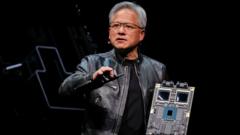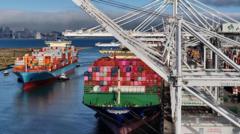Fifty years post-Vietnam withdrawal, the sentiments around U.S. influence in Asia continue to evolve, particularly in light of a rising China.
The Vietnam War Through a New Lens: A Reflection on 50 Years of Change

The Vietnam War Through a New Lens: A Reflection on 50 Years of Change
As Vietnam commemorates the fall of Saigon, the global dynamics shift under a redefined U.S. role.
In the wake of the 50th anniversary of the fall of Saigon, the remnants of America's legacy linger amid the shifting tides of Asian geopolitics. Fifty years ago, the image of chaos at the U.S. Embassy in Saigon epitomized the end of a tumultuous chapter in American involvement overseas. An American war reporter, reminiscent of his last frantic moments in Saigon, penned words that captured the complexities of that era. His views echoed the once-strong belief in the domino theory, positing that communism’s spread could engulf Asia, a sentiment resonating from a more paternalistic American approach to foreign policy.
Today, as the U.S. withdraws from its commitments in the region, the landscape is markedly different. China has emerged as a new dominant force, extending its influence across Asia, including through infrastructure and strategic military advancements. The developments across the South China Sea bear witness to this, with China's aggressive renovations to military bases unsettling regional dynamics. Meanwhile, the quiet villages in neighboring countries are transformed by the influx of Chinese goods, suggesting a shift that reshapes trade patterns and economic dependencies across the region.
The effects of U.S. retreat from its ideals of democracy and aid extend beyond its borders, inciting feelings of confusion and ambivalence in once-enemies and allies alike, as they recalibrate their alliances and understandings of stability in this complex relationship. Veteran observers and historians alike reflect upon not just the military aftermath of the Vietnam conflict, but the broader implications of a reconfigured geopolitical framework that sees the emergence of China as a central player in Asia's narrative. As dialogues evolve, it remains critical to observe how countries navigate this changing environment framed not by the legacy of American intervention but by a rapidly rising East.
Today, as the U.S. withdraws from its commitments in the region, the landscape is markedly different. China has emerged as a new dominant force, extending its influence across Asia, including through infrastructure and strategic military advancements. The developments across the South China Sea bear witness to this, with China's aggressive renovations to military bases unsettling regional dynamics. Meanwhile, the quiet villages in neighboring countries are transformed by the influx of Chinese goods, suggesting a shift that reshapes trade patterns and economic dependencies across the region.
The effects of U.S. retreat from its ideals of democracy and aid extend beyond its borders, inciting feelings of confusion and ambivalence in once-enemies and allies alike, as they recalibrate their alliances and understandings of stability in this complex relationship. Veteran observers and historians alike reflect upon not just the military aftermath of the Vietnam conflict, but the broader implications of a reconfigured geopolitical framework that sees the emergence of China as a central player in Asia's narrative. As dialogues evolve, it remains critical to observe how countries navigate this changing environment framed not by the legacy of American intervention but by a rapidly rising East.
















